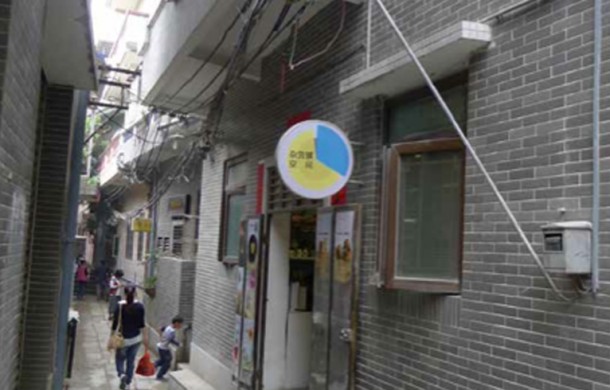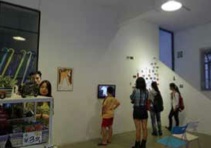STORE & SPACE
| 2013年05月22日 | 发表于 LEAP 20

ART STUDENTS ARE a familiar sight in Xiaozhou Village: as the bus conductor calls out “Xiaozhou Village Entrance,” the bus, which starts out empty from the university town, is met with an influx of students. As a rule, they are tourists, or art academy students who have gathered together to prepare for exams. Lugging backpacks, carrying water bottles, their plan is to visit the “Xiaozhou Village Art District” under the overpass. As the bus travels on, the view consists mainly of painting studios, as well as the giant posters outside these that read: “Entrance Exams!” (These are cram schools, tailored to prepare candidates for the exams unique to different academies.) The roads in Xiaozhou Village are very narrow; there are always pedicabs and motorcycle taxis (motorcycles that take passengers, although according to the Guangzhou traffic rules, it is illegal for motorcycles to do so) competing with the bus for road space. On the small road running past the Xiaozhou People’s Auditorium, as well as on the road that leads to Store & Space, people must also sometimes make way for larger, freight-carrying pedicabs.
Store & Space operates in a converted three-story village house. The interior is a one-room grocery store and a small exhibition space, 40 to 50 square meters in size. To the left of the entrance is a small shop selling daily necessities— ashtrays, lighters, snacks of every kind, umbrellas, backpacks, cups— goods more suited to student tastes than the washbowls, clay pots, and clothes racks all piled up together at an old-fashioned grocery store might be. On the left is the open exhibition space: one wall an ordinary shop facade, the other divided into two by a window-lined staircase. The areas both above and below the staircase are used for exhibition.
As a new space, Store & Space has as of yet only revealed a kind of richness. The texture of Xiaozhou Village and the character of the grocery store are undoubtedly the two main forces behind this: students make up the vast majority of Store & Space’s visitors, although neighboring locals coming to inquire about the price of plants and other goods are also regular customers. The pieces on display disseminate their impressions of Xiaozhou to varying degrees—in Zhang Jiaping’s work Sketch, a flower grower at Guangzhou International Biology Island prunes a spherical bush before sketching it; Song Ta’s How To Draw A Cow seems to attempt to engage art students preparing for exams in dialogue; Cai Hui’s video Performance and Mosaics is composed of an anonymous person who “dreams to become a professional actor” exploring abandoned houses around Xiaozhou; Yang Ming’s Limited “Reproduction” and Game Of Collecting directly makes a connection between the rules of a game and the sale of goods at a grocery store.
Store & Space often reminds people of another unconventional space in Guangzhou, the Observation Society, which has also attempted to take root in the community and which concerns itself similarly with the structural characteristics of an organization and the mechanistic possibilities hidden below its surface. But while the Observation Society is only open during exhibitions, and thus exists on an event-based basis, Store & Space is guaranteed to be open and operating daily. As such, its artworks cannot be avoided, the clamor of the simulacra of knowledge can be quietened, and the everyday products on these shop shelves, as well as all the private gardens on the village rooftops, become the new everyday.


